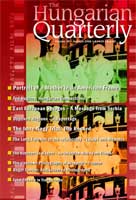The Long Farewell. Aristocracy in Hungary in the 20th Century
The Long Farewell. Aristocracy in Hungary in the 20th Century
Author(s): Levente PüskiSubject(s): History
Published by: Society of the Hungarian Quarterly
Summary/Abstract: A mid the gradual modernisation of post-1867 Hungarian society, the aristocracy was considered to be the closest embodiment of the “historical”, being seen (by the lower and rising middle classes, and even the aristocracy itself) as a social stratum which owed its continued existence to a system of traditions and privileges dating back to the Middle Ages. Bearing one of the titles of the higher nobility was, originally, the sine qua non condition of being a member of the aristocracy. (In Hungary, as in most other countries of Europe, differentiations of status were developed over the centuries according to a ranking system.) There were three traditional aristocratic titles. The most junior in respect of the prestige and influence that went with it was that of baron. This was followed by count; and prince ranked the highest. From time to time, the use of a foreign aristocratic title was allowed in Hungary, as in the case of the Pallavicini family, who were marquesses. The title of archduke was reserved for members of the ruling Habsburg-Lotharingian dynasty. There were three main ways of becoming a member of the Hungarian aristocracy. The primary way was through heredity: a peerage awarded one’s ancestor by a King of Hungary was inherited by all descendants.[...]
Journal: The Hungarian Quarterly
- Issue Year: 2008
- Issue No: 191
- Page Range: 115-132
- Page Count: 18
- Language: English

